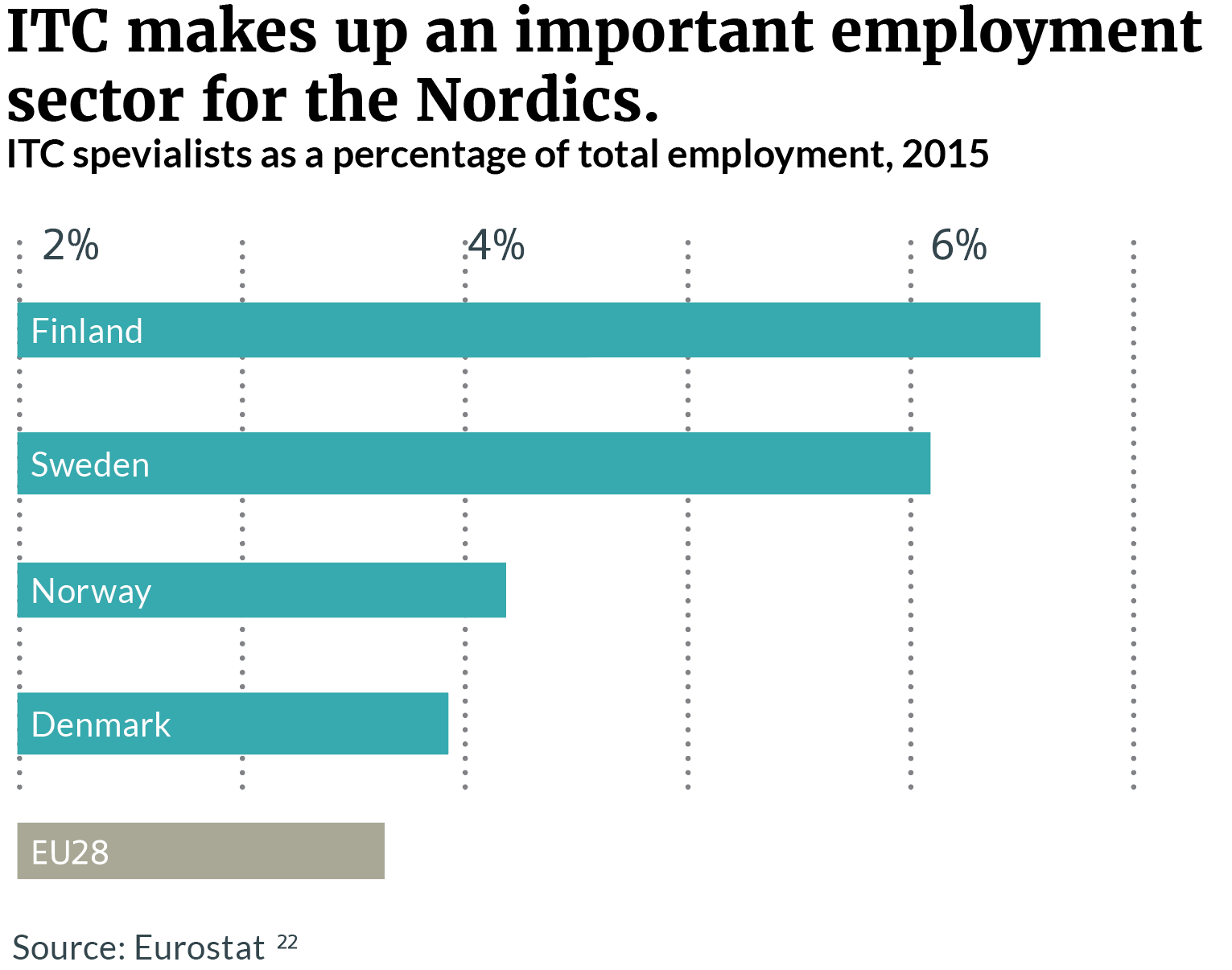The Confederation of Danish Industry’s Digital Director: Denmark faces serious digital challenges
Denmark did almost everything right in the initial phases of
digitisation. In the past ten years, our neighbours have pipped us to the postas they optimise much better than we do. Even bigger challenges are looming.
Although we are proud of our digital success, we in Denmark are well advised to watch our backs more than ever before. On the face of it, things are going well: 98 percent of Danes have surfed the internet within the last three months and we are No. 1 in DESI, the European Commission’s digital index that shows how well we have integrated the internet into our society.
We have picked the low-hanging fruit
“Until now we have harvested the easy pickings in digitalisation: We have made it easy to make our tax returns, add our children to the kindergarten’s online waiting list and receive mail via a secure electronic mailbox. We have made it possible to contact the public authorities in flexible and efficient ways," explains Lars Frelle-Petersen, who is Digital Director at the Confederation of Danish Industry.
Digital Nordics – Staying Ahead of the Digital Revolution
- The Digital Nordics report describes the status quo in digitalisation in the Nordic countries. Even though these countries have performed well until now, the signs are that the speed at which they are digitalising has slowed down and that other countries are catching up – and are hard on their heels, particularly in Denmark.
- The situation is unfortunate because we can use digital innovation to create growth and resolve some of today’s most pressing challenges: Rapid urbanisation, pollution, climate change, an increasing old-age dependency ratio and international competition for talent.

Lars Frelle-Petersen, Digital Director at the Confederation of Danish Industry. Photo: Sif Meincke/Dansk Industri
However, when it comes to industry, cracks begin to appear in our glossy digital façade. Countries like South Korea, Singapore and Japan are superb exponents of robot automation. Denmark and the other Nordic countries perform better here than the European average. Unfortunately, the good news stops here.
When we begin to compare Denmark with our closest neighbours (and competitors), Sweden, Norway and Finland, Denmark lags behind in crucial areas. The Digital Nordics report measures IT readiness in the Nordic countries.
In one crucial area, Denmark has brought up the rear since the very beginning. In Finland and Sweden, people educated in ICT disciplines account for about 6 percent of the workforce. In Denmark, we have 30 percent fewer. This is, to say the least, bad news because digitalisation is crucial for growth in a large number of sectors.

In the past 20 years, Denmark has improved productivity by only 1 percent per year. This is a matter of even greater concern. In Sweden, GDP per hour worked has improved by 1.9 percent per year in the same period. Even the OECD average is 50 percent higher than in Denmark.
Challenges of a very different order
These statistics have set off red warning lights at the Confederation of Danish Industry. “If we are to exploit digitalisation and reach the next level, we face challenges of a very different order,” Lars Frelle-Petersen points out.
“The business community must actively help to reconstruct the entire market and maybe even to change organisational structures. If companies are to deliver super-personalised products, they need a completely new set-up. If we are to exploit the digital platforms, we must also revolutionise education,” he says. He adds:
“Take the medical sector as an example: it will need both radical innovation and national investments, such as the foundation of a genome centre, to develop personalised medicine in Denmark. On the other hand, there is huge potential here to create innovative products and efficient business models.”
Slow recovery after the financial crisis
The Digital Nordics report warns, however, that there are many serious challenges ahead.
Firstly, Denmark no longer leads the field when it comes to implementing new digital solutions. Norway and Finland maintain their digital growth. Other countries generally, including the UK, Singapore and New Zealand, have far more heat under their digital crucibles.
One possible cause of sluggish growth may be that Denmark has been slow to recover after the financial crisis,” explains Bjarne Lykke Sørensen, CEO Digital Factory Division Nordic at Siemens.
“It is disappointing to note that it has taken ten years for industrial manufacturing to reach the same level as before the financial crisis. We have recovered more slowly than comparable countries.”

In the coming years, he believes it is crucial that Denmark focuses sharply on creating digital growth and effective solutions for the industrial sector.
“Denmark has failed for some time to focus adequately on manufacturing, and the automation-related expertise at our institutes of higher education has been insufficiently exploited in the manufacturing context. We lack industrial technicians, electricians and programmers to help create new digital solutions.”
In the distant past, mass production required cheap labour. Today, automation, 3D printing and digitalisation allow us to both produce personalised products and keep wage costs down. With the new technologies, we have an opportunity to claw back industrial manufacturing from the Far East – but only if we succeed in exploiting the digital opportunities. We have to get a grip,” says Bjarne Lykke Sørensen.